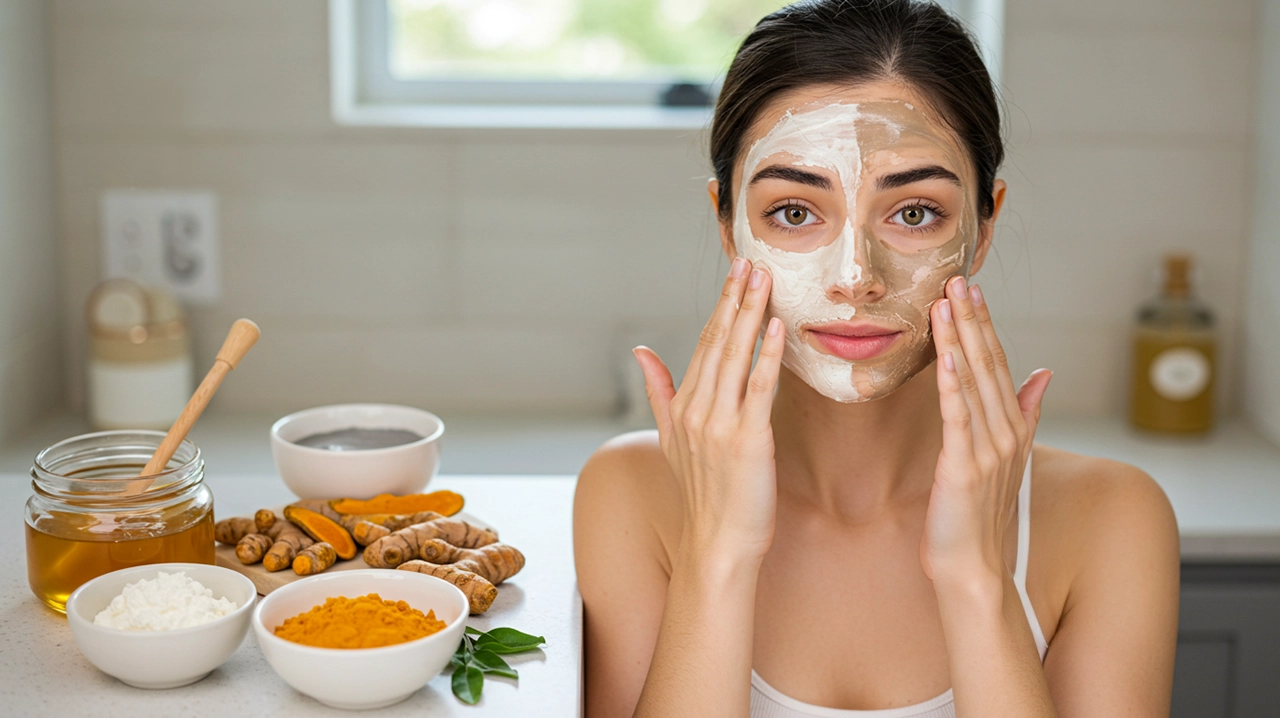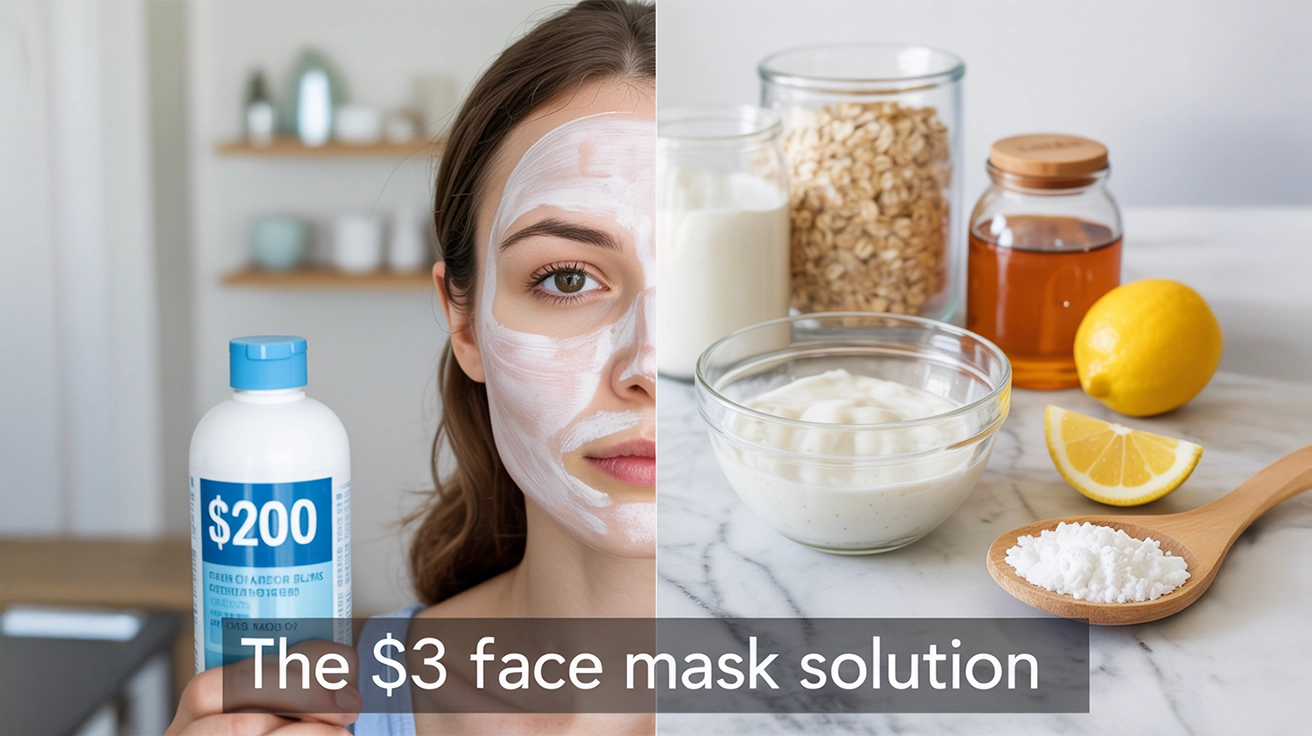

Are you tired of battling persistent acne and stubborn blackheads? Imagine having a secret weapon in your kitchen that can change your skin! Green tea, a popular drink, might be the solution you need. Its potent antioxidants and anti-inflammatory properties make it a skincare superstar that can work wonders for your complexion.
But here’s the exciting part: you don’t need to splurge on expensive skincare products to harness the power of green tea. You can make a homemade face mask to fight acne and blackheads. It only takes a few simple ingredients and steps. 🍵✨ This DIY solution not only saves you money but also gives you control over what you’re putting on your skin.
Ready to unveil the secrets of this green tea face mask? In this blog post, we will show you what you need to know. We will cover the great benefits of green tea for your skin.
We will also explain how to create and use your own mask. You’ll learn how to tailor the mask to your specific skin concerns and discover tips to maximize its effectiveness. Let’s dive in and start your journey to clearer, healthier skin!
Green tea is a powerhouse of antioxidants, particularly catechins and polyphenols. These compounds protect your skin from free radicals. Free radicals can cause early aging and harm skin cells. By incorporating green tea into your skincare routine, you’re providing your skin with a natural defense against environmental stressors.
If you struggle with redness, irritation, or acne-related inflammation, green tea can be your skin’s best friend. Its anti-inflammatory properties help soothe and calm your skin, reducing the appearance of redness and swelling. This makes green tea an excellent ingredient for those with sensitive or acne-prone skin.
Green tea’s antibacterial properties make it an effective tool in your fight against acne. It helps fight the bacteria that can cause breakouts. This may reduce how often and how severe acne flare-ups are.
Excess sebum production is a common culprit behind oily skin and acne. Green tea can help regulate sebum production, leading to a more balanced complexion. This is particularly beneficial if you have oily or combination skin.
Here’s a quick overview of green tea’s benefits for your skin:
| Benefit | How it helps your skin |
|---|---|
| Antioxidant | Protects against free radicals and premature aging |
| Anti-inflammatory | Soothes redness and irritation |
| Antibacterial | Fights acne-causing bacteria |
| Sebum reduction | Balances oil production |
With these powerful benefits, it’s no wonder green tea has become a popular ingredient in skincare. Now that you understand how green tea can improve your skin health, let’s look at the ingredients you’ll need for your homemade face mask.
When creating your homemade face mask for acne and blackheads, the star ingredient is green tea. You can use either loose green tea leaves or tea bags. Green tea is full of antioxidants. It also has anti-inflammatory properties. These can help calm your skin and lessen redness.
| Green Tea Type | Pros | Cons |
|---|---|---|
| Loose leaves | More potent, fresher | Requires straining |
| Tea bags | Convenient, less mess | May contain additives |
To create a base for your mask, you’ll need either natural clay or oatmeal. Both ingredients have their unique benefits:
Adding honey or aloe vera to your mask will provide additional benefits:
You can enhance your mask with a few drops of essential oils. Some beneficial options include:
Now that you’re familiar with the ingredients, let’s move on to preparing your green tea face mask.

To create an effective green tea face mask, start by brewing a strong cup of green tea. Use one tea bag or 1-2 teaspoons of loose leaf green tea per cup of hot water. Allow the tea to steep for 3-5 minutes, then remove the tea bag or strain the leaves. Let the tea cool to room temperature before using it in your mask.
Once your green tea is ready, it’s time to combine it with other beneficial ingredients. Here’s a simple recipe to get you started:
Mix these ingredients in a small bowl until well combined. Each ingredient serves a specific purpose:
| Ingredient | Benefits |
|---|---|
| Green tea | Antioxidants, reduces inflammation |
| Honey | Antibacterial, moisturizing |
| Lemon juice | Brightening, balances oil production |
| Yogurt | Exfoliating, soothing |
The best consistency for your green tea face mask should be thick enough to stay on your face. It should not be so thick that it is hard to spread. You can adjust the consistency by:
Remember, the perfect consistency allows for easy application and maximum absorption of the beneficial ingredients into your skin.
Before applying your homemade green tea face mask, it’s crucial to start with a clean canvas. Begin by washing your face with a gentle cleanser suited to your skin type. Use lukewarm water to avoid irritating your skin. Pat your face dry with a clean, soft towel, leaving it slightly damp to help the mask adhere better.
Now that your face is clean, it’s time to apply the mask. Here’s a step-by-step guide:
| Area | Application Tip |
|---|---|
| T-zone | Apply slightly thicker layer |
| Cheeks | Use gentle, upward strokes |
| Chin | Cover thoroughly for blackhead prevention |
Leave the mask on for 10-15 minutes. This allows the green tea’s antioxidants and other beneficial ingredients to work their magic on your skin. If you have sensitive skin, start with 5-7 minutes and gradually increase the duration as your skin adjusts.
When it’s time to remove the mask, use lukewarm water and gentle circular motions. Rinse thoroughly to ensure no residue is left behind. Pat your face dry with a clean towel.
Follow up with your regular skincare routine, including toner and moisturizer. Your skin may feel slightly tingly and refreshed – this is normal and indicates the mask is working its magic on your acne and blackheads.
Green tea’s potent antioxidants and anti-inflammatory properties make it an excellent choice for combating acne. The polyphenols in green tea, particularly epigallocatechin gallate (EGCG), help reduce sebum production and fight acne-causing bacteria. When applied topically, green tea can:
To get the most acne-fighting benefits from your green tea mask, add a teaspoon of honey. Honey has antibacterial properties that can help.
While green tea alone can help with blackheads, combining it with other ingredients can enhance its effectiveness. Here’s a simple technique to target blackheads:
For stubborn blackheads, try this enhanced green tea scrub:
| Ingredient | Amount | Benefit |
|---|---|---|
| Green tea | 1 tbsp | Antioxidant |
| Sugar | 1 tsp | Exfoliant |
| Lemon juice | 1/2 tsp | Astringent |
Mix these ingredients and use as a gentle scrub once a week.
You’ll be pleased to know that green tea can also help minimize the appearance of pores. Its astringent properties tighten the skin, while its anti-inflammatory effects reduce pore swelling. To enhance the pore-minimizing effects:
Remember, while green tea is beneficial for various skin concerns, consistency is key to seeing results. Incorporate this mask into your regular skincare routine for the best outcomes.
To maximize the benefits of your green tea face mask, it’s essential to establish a consistent routine. For most skin types, using the mask 1-2 times per week is ideal. This frequency allows your skin to reap the benefits without overwhelming it. However, if you have particularly oily or acne-prone skin, you might increase usage to 2-3 times per week.
Here’s a suggested schedule based on skin type:
| Skin Type | Recommended Frequency |
|---|---|
| Normal | 1-2 times per week |
| Oily | 2-3 times per week |
| Dry | 1 time per week |
| Sensitive | 1 time every 2 weeks |
Remember to listen to your skin and adjust accordingly. If you notice any irritation, reduce the frequency.
Proper storage is crucial to maintain the mask’s effectiveness and prevent bacterial growth. After preparing your green tea face mask, store any leftovers in an airtight container in the refrigerator. This will help preserve the mask’s freshness and extend its shelf life.
To ensure optimal quality:
Before applying the green tea face mask to your entire face, it’s crucial to perform a patch test. This step helps you identify any potential allergic reactions or sensitivities to the ingredients.
To conduct a patch test:
By following these best practices, you’ll ensure that your homemade green tea face mask is both safe and effective in targeting your acne and blackhead concerns. Next, we’ll explore some ways to enhance the mask’s effectiveness for even better results.
To maximize the benefits of your green tea face mask, incorporate these complementary skincare steps:
| Step | Product Type | Frequency |
|---|---|---|
| 1 | Cleanser | Twice daily |
| 2 | Toner | Twice daily |
| 3 | Exfoliant | 1-2 times weekly |
| 4 | Moisturizer | Twice daily |
Your diet plays a crucial role in skin health. Consider incorporating these skin-friendly foods:
Reduce your intake of processed foods, sugary snacks, and dairy products, as these may exacerbate acne and blackheads.
Adopt these habits to support your skincare efforts:
By using these lifestyle tips with your green tea face mask and a good skincare routine, you can achieve clearer, healthier skin. Remember, consistency is key when it comes to skincare, so stick to your routine and give it time to show results.
Green tea face masks offer a natural and effective solution for combating acne and blackheads. You can use green tea’s antioxidants and anti-inflammatory benefits to make a simple and effective treatment at home. With just a few ingredients and simple steps, you can address specific skin issues and improve your overall complexion.
Remember to be consistent with your skincare routine and follow best practices for optimal results. Using this green tea face mask in your routine helps you achieve clearer and healthier skin. Give it a try and see the difference it can make for your acne and blackhead concerns!

Your go-to guide for all things beauty and wellness, with a knack for uncovering the secrets to radiant skin and a balanced life.
Your Ultimate Guide to Healthy, Glowing Skin – Expert Tips, Honest Reviews & Skincare Secrets!
Sign up our newsletter to get update tips, honest reviews & skincare secrets!